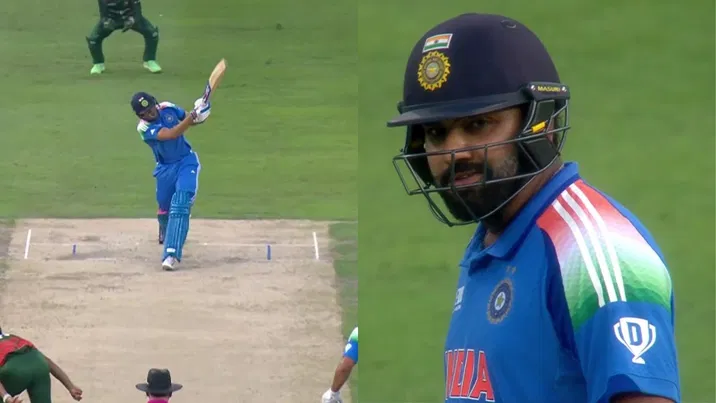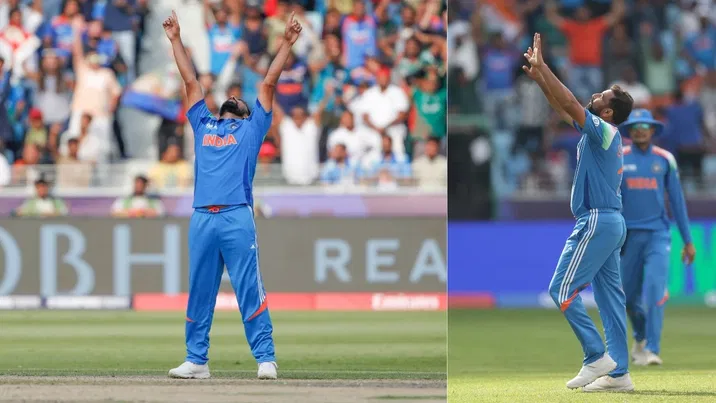
(Credit X)
Rohit Sharma experienced a minor setback when struck on the thumb during a practice session, but he quickly brushed it off as he, along with other Indian batters, extended their training hours to counter the potential challenges posed by Pakistan’s pace attack in their crucial T20 World Cup encounter on Sunday.
Despite the discomfort caused by the blow from a delivery by left-arm throwdown specialist Nuwan Seneviratne, Rohit persisted in his batting practice. He even shifted to face deliveries from another end of the pitch.
The pitches at Nassau County cricket ground have faced criticism for their uneven bounce, with balls frequently rising sharply from the length due to wide cracks. Aware of this challenge, the Indian coaching staff converted three out of six practice strips at Cantiague Park in Long Islands into abrasive surfaces with cracks to replicate match conditions for the top-order batsmen.
With the likes of Shaheen Shah Afridi, Mohammed Amir, Haris Rauf, and Naseem Shah in Pakistan’s pace arsenal, the Indian team is well aware of the need to adapt to different conditions. This determination was evident as they practiced diligently to dominate on tracks with variable bounce, even observing South African nets’ example earlier in the day on similar pitches.
While Kagiso Rabada and Anrich Nortje unleashed their formidable deliveries, none of the top South African batsmen were willing to take any risks that might jeopardize their fitness ahead of their match against the Netherlands.
In stark contrast, the Indian players fully embraced the challenging conditions, utilizing them to prepare for the upcoming task of confronting the Pakistani bowling attack on tracks where teams have struggled to even reach the 100-run mark in four out of six innings.
The Indian skipper, Virat Kohli, along with others, committed themselves wholeheartedly to a rigorous three-hour afternoon session. They faced the likes of Jasprit Bumrah, Arshdeep Singh, Khaleel Ahmed, and Mohammed Siraj.
Kohli, Rishabh Pant, and Suryakumar Yadav were among the first to step into the nets. They confronted the bowlers mentioned earlier, as well as the throwdown specialists who consistently delivered challenging lengths.
The primary focus for the batsmen was on adapting to the uneven bounce, a characteristic prominently displayed on the practice pitches they trained on.
Kuldeep Yadav’s potential match-up against Pakistani batsmen presents an intriguing prospect given his past success against them in 50-over matches. However, whether India will opt to include him in the middle overs instead of Axar Patel remains uncertain.
Analyzing Babar Azam’s performance against orthodox left-arm spinners reveals a relatively modest strike-rate of just over 112. Therefore, Axar’s accurate deliveries targeting the leg-middle line could prove to be highly effective.
Despite not featuring in India’s opening match against Ireland, Kuldeep Yadav engaged in an extensive net session alongside fellow spinners Axar Patel, Ravindra Jadeja, and Yuzvendra Chahal.
During the practice, batsmen were observed practicing various cross-batted shots like sweeps and reverse-sweeps to counter the spinners’ deliveries.
As the nets session concluded, Ravindra Jadeja and Shivam Dube took their turns batting, with Virat Kohli joining them for his second stint of the day.
The practice session ended on a lighter note with a team bonding activity, as players relaxed and enjoyed a game of football, fostering camaraderie within the squad.




